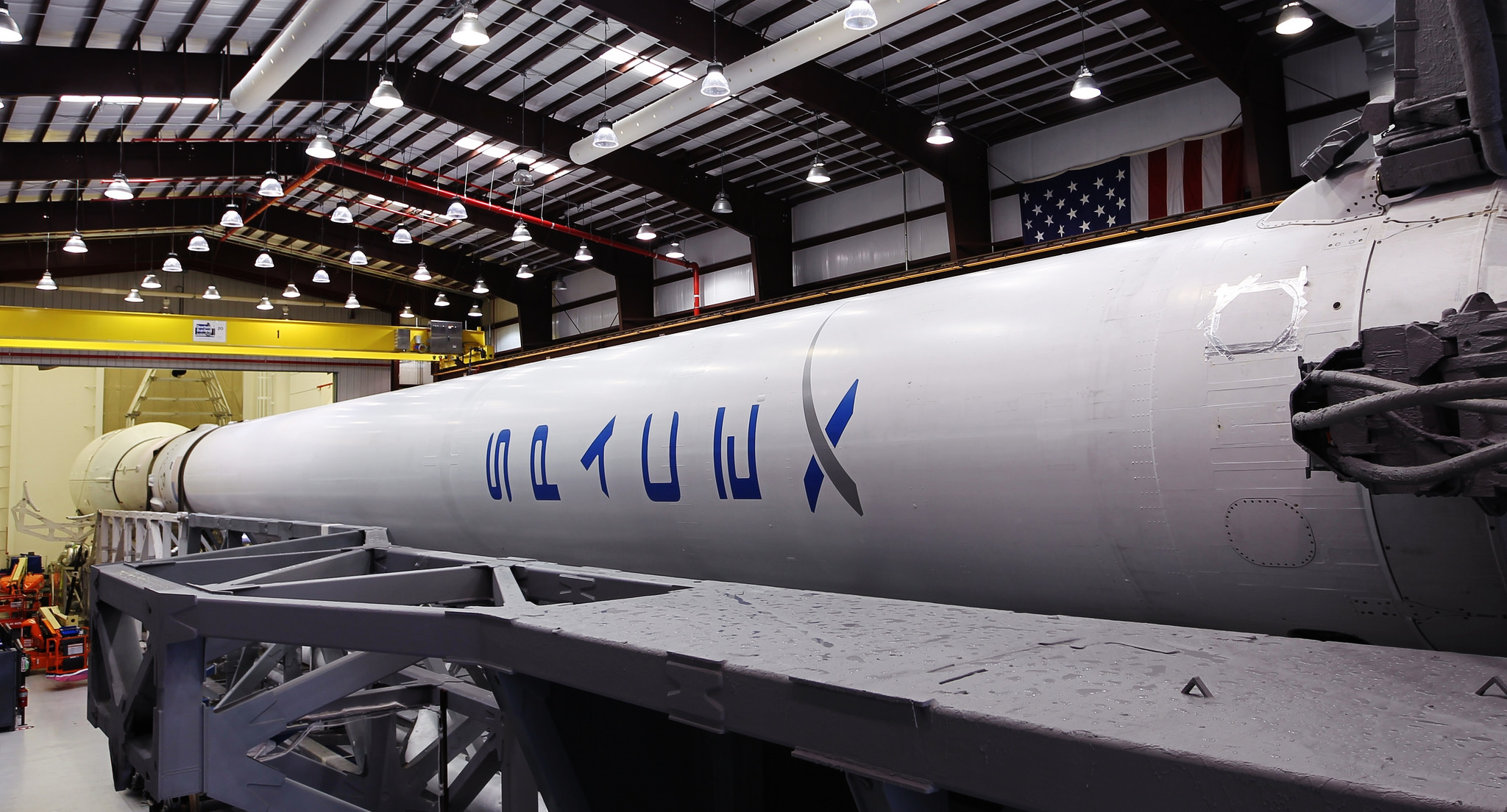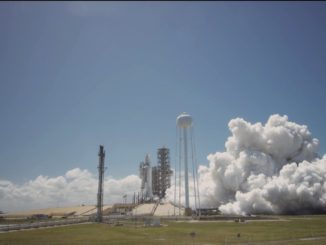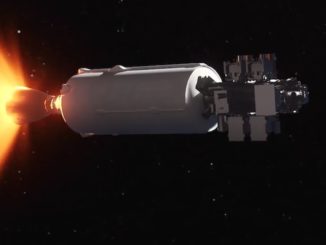Updated with new launch date.

Hours after launching a batch of cargo and provisions to the International Space Station on Tuesday, SpaceX ground teams wheeled another Falcon 9 rocket into the hangar at Cape Canaveral for a commercial satellite launch set for April 27.
If engineers complete preparations on the rocket in time, SpaceX will eclipse its own record and launch two Falcon 9 rockets 13 days apart. SpaceX achieved a 14-day turnaround at its Cape Canaveral launch pad in September 2014.
The next rocket’s first and second stages are now inside the hangar at the southern perimeter of SpaceX’s Complex 40 launch pad for final testing, according to sources familiar with the launch preparations. Workers will connect the rocket stages together, then the Falcon 9 will be rolled out of the integration building and rotated vertical for a static fire test of the rocket’s nine Merlin main engines as early as Monday.
The launcher’s European-built communications payload and nose cone will join the Falcon 9 next week.
The rocket’s payload is the TurkmenAlem52E communications satellite, a relay station manufactured in France by Thales Alenia Space for the government of Turkmenistan.
The spacecraft arrived at Cape Canaveral on Feb. 26 after a trans-Atlantic flight from the Thales factory in Cannes, France. Since it touched down in Florida, the satellite has been fueled with propellants for in-space maneuvers, and it completed a final regimen of ground tests.
The Turkmen satellite was supposed to blast off March 21, but SpaceX stood down from the launch over concerns with flawed high-pressure helium tanks in the company’s factory in Hawthorne, California.
After resolving the issue, SpaceX shuffled its launch manifest, electing to launch its next space station resupply flight first, then shift attention to the TurkmenAlem52E mission.
Officials hoped to launch the Turkmen spacecraft April 24, but an official with Thales Alenia Space — the craft’s manufacturer — said Thursday the liftoff was rescheduled for April 27.

The satellite — enclosed within the Falcon 9’s 17-foot diameter payload shroud — will be rolled over from SpaceX’s payload processing facility to the Complex 40 hangar a few days before liftoff.
The Falcon 9 rocket’s second stage will propel the 4,500-kilogram, or 9,920-pound, satellite into geostationary transfer orbit. The spacecraft’s own propulsion system will circularize its orbit at an altitude of 22,300 miles over the equator a few weeks later.
The high-altitude destination for the hefty communications satellite will take up most of the Falcon 9’s fuel, leaving no reserve for a controlled descent and landing attempt for the first stage booster.
The craft will be parked at 52 degrees east longitude in the belt of geostationary satellites, hovering over a fixed position to relay communications signals.
The satellite is also named MonacoSat because Monaco has rights to the 52 degrees east slot to be occupied by the Turkmen satellite. In exchange for permitting the spacecraft to reside there, Monaco’s government secured the use of 12 Ku-band transponders on the satellite.
Luxembourg-based satellite operator SES signed an agreement with Space Systems International Monaco, an entity licensed by Monaco’s government, to commercialize the 12 Ku-band transponders.
“Once operational in orbit, TurkmenAlem52E/MonacoSat will allow Turkmenistan to operate its first national satellite telecommunications system, ensuring enhanced, secure telecommunications for the country,” Thales wrote in a mission summary posted on the company’s website.
SpaceX has fired off four Falcon 9 rockets since the beginning of the year, sending up two unmanned Dragon capsules to the space station, a NOAA space weather observatory to an operating post a million miles from Earth, and a pair of futuristic communications satellites wholly powered by ion drive engines.
The rapid-fire launch cadence so far this year matches the flight rate of United Launch Alliance, SpaceX’s main competitor in the U.S. market. SpaceX’s top rival in the global commercial launch business is Arianespace, which has logged two successful launches in 2015.
ULA and Arianespace have a packed slate of missions in the coming months, and SpaceX expects a two-month gap in Falcon 9 launches after the liftoff April 24.
SpaceX has more than a dozen launches on its manifest for 2015, including the launches already accomplished.
Follow Stephen Clark on Twitter: @StephenClark1.



